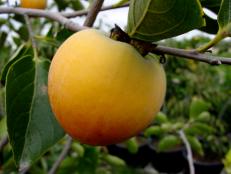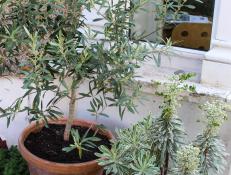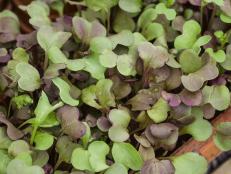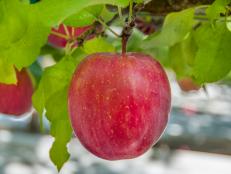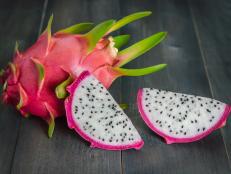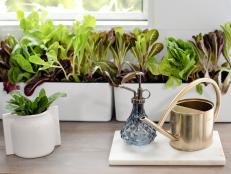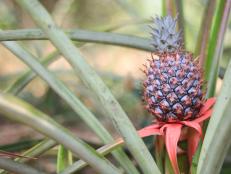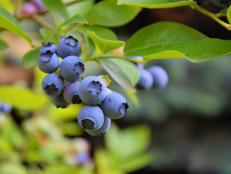Growing Fruit Trees Indoors

Logee's Plants
Dwarf fruit trees add freshness, color and fragrance to an indoor setting. They can provide years of fruit, as well. Author and horticulturist Lance Walheim explains the basics of growing beautiful trees indoors.
• Dwarf fruit trees result from grafting a fruiting variety of tree onto dwarf rootstock, in essence inserting the stem of a citrus tree onto the roots of another tree so the tissues can fuse together. This process is done at a nursery.
• Try growing the sour citrus varieties, like lemons and limes, which sweeten the most easily without lots of sunlight.
• Dwarf trees can be purchased at a local or nursery or through a catalog. Mail-order trees arrive with bare roots, with all the soil carefully rinsed from the root system, leaving it exposed.
• To transplant a bare-root specimen, first choose a pot with good drainage. If the container you want to use does not have a hole for drainage, plant the tree in a simple, smaller pot that you can set inside the decorative pot.
• Use light and airy potting soil for your citrus tree, preferably with perlite mixed in it. Never use soil from the yard. Add soil up to the line on the stem of the tree where discoloration from the dirt used by the nursery ends. Make sure you leave enough space at the top of the pot to water thoroughly without washing dirt over the top.
• Water the plant thoroughly and place it in bright, direct light. A western or southern exposure is best. Don’t let the soil get too dry between waterings. Citrus trees like regular watering.
• Citrus trees are heavy feeders, so they should be fertilized once a month with a chelated mix of manganese, iron and zinc (most multipurpose fertilizers contain these minerals).
• Citrus trees love humidity. You can add moisture to the air with a humidifier, by misting the plants frequently, or by placing them in a tray filled with pebbles and water added to the top of the pebbles. Be careful not to place your plants directly in front of a vent or in drafts.
• During the warm summer months, let your tree benefit from the sun outdoors. Be sure you acclimate your plant to the brighter sunlight gradually, placing it outdoors in a shady spot for a few days before moving it into intense sunlight.
• As your tree grows larger, consider placing it on a decorative platform with casters to make moving it easier.
• Citrus trees produce a multitude of blossoms, not all of which will produce fruit. To help increase the number of fruit-bearing blossoms on your tree, try aiding pollination by brushing the stamens of an open blossom with a soft paintbrush, moving from blossom to blossom.
• Citrus is susceptible to spider mites, mealybugs and scale. Check the trunk for mealybugs and scale. If you find evidence of these pests, try dipping a cotton swab in alcohol and rubbing the infected area. Check especially the joints where the leaves join the stem. To treat spider mites, spray your plant with insecticidal soap or horticulturist oil, which will smother the insects.






